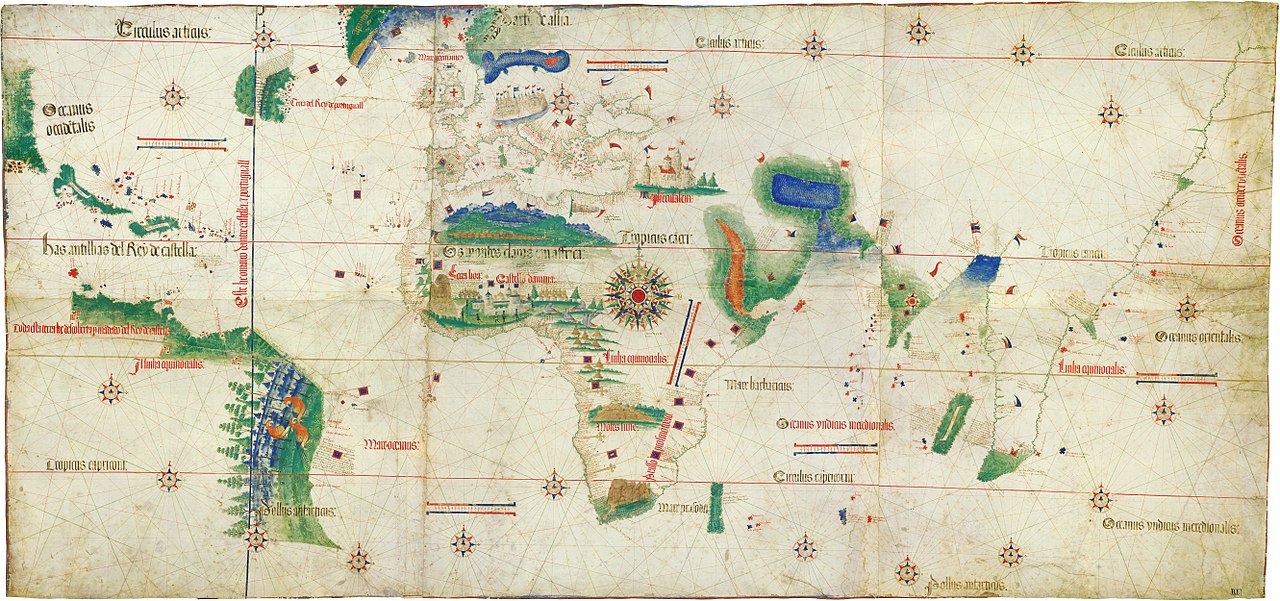Cantino planisphere

Annotation
The famous Cantino planisphere was made in 1502 by an anonymous Portuguese official at the request of Alberto Cantino, an Italian agent in Lisbon of Ercole d’Este, Duke of Ferrara. It is the earliest map showing the recent discoveries by the explorer Vasco da Gama, who, using a new portable version of astronomers’ astrolabe, charted Brazil, Newfoundland, Greenland, Africa, and India. Besides the new geographic knowledge Gama brought, the nautical trade in spices, jewels, precious metals, and hardwoods he initiated, whose sources the map portrays in uniformly vibrant green, also made Lisbon, at least temporarily, the center of world trade. Reflecting Italian traders’ recognition of the threat to their monopoly on luxury goods brought overland from Arabia, India, and East Asia, Cantino, on d’Este’s behalf, commissioned a map showing all the latest geographic discoveries. The Cantino map, in fact, portends imperial rivalry: the blue vertical line on the left marks the division of possession of newly discovered lands outside Europe between Portugal and Spain, according to the 1494 Treaty of Tordesillas. The Cantino map’s features and emphases on trade destinations across hemispheres, ironically rendering Europe itself less conspicuous, would shape European cartography for the next century.
This source is a part of the European Maps of the Early Modern World teaching module.
Credits
Biblioteca Estense Universitaria, Modena, Italy